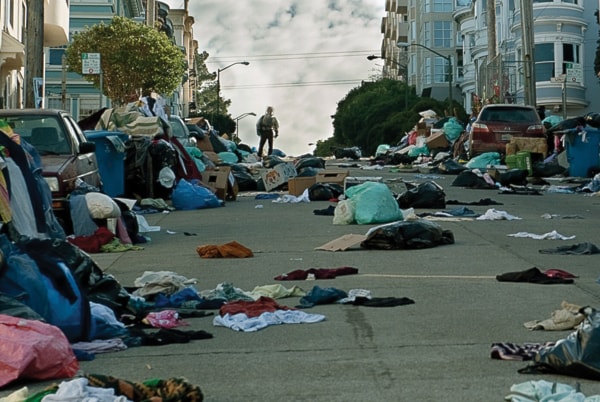Contagion
2 1/2 stars (out of 4)
Rated: PG
Steven Soderbergh’s Contagion is the feel-bad movie of the year and on more than one level.
A star-studded thriller, it’s reminiscent of 1970s disaster movies, yet much more grounded in reality.
The film details the rapid spread of a lethal new virus, called MEV-1, and does so quite realistically — at least until an outbreak of maudlin illogic near the end.
Contagion is guaranteed to have you reaching for the Purell and bristling at uncovered coughs. It could become an instructional tool for emergency responders.
With its many scenes of rising dread and social upheaval, the film is also a downer to sit through, even with acts of on-screen heroism. Torontonians who lived through SARS and the more recent H1N1 scare will really feel it.
As if to drive home the connection, one shot shows a lab technician working with stacked samples of MEV-1, SARS and H1N1.
On a more positive note, Contagion demonstrates that Soderbergh still has it in him to deliver a mainstream movie, despite his preference for art-house climes and his stated desire to retire sometime soon.
Working as his own cinematographer once again, and employing the high-definition RED digital camera that has become his favourite tool, Soderbergh spares few sensibilities in outlining how quickly a contagion would cross international boundaries.
Tracking the movement of hands from the peanut bowl at a bar to a credit card exchange to the turn of a doorknob, he shows how easily microbes are exchanged between humans.
A disease specialist comments that the average person touches their face between 2,000 and 3,000 times per day.
Gwyneth Paltrow is Patient Zero, a business traveller named Beth Emhoff, who is intriguingly introduced on Day Two of her swiftly developing infection — we don’t immediately know what happened on Day One.
Whatever Beth caught on a trip to China is now returning home with her to Minnesota, where her new husband Mitch (Matt Damon) and young son are waiting to welcome her home.
Beth is barely through the door when crisis strikes, and it strikes deeply. As Mitch struggles to take in what’s happened to his family — he’s surprisingly immune to the disease — others around the world are attempting to grasp an escalating infection rate and body count.
Doctors worldwide search for a vaccine, all too aware that in normal circumstances, the quest can take months or longer.
A Hollywood dream team works the official phones and labs. In Atlanta, brisk Dr. Ellis Cheever (Laurence Fishburne) runs the U.S. Centers for Disease Control, barking at front-line doctors (represented by Kate Winslet) to triage patients while also encouraging lab scientists to redouble their vaccine tests.
At the World Health Organization in Geneva, Dr. Leonora Orantes (Marion Cotillard) is similarly involved in the hunt to unlock MEV-1’s secrets and to slow the infection’s relentless spread.
Complicating matters greatly are the rumours being spread by a conspiracy theory blogger somewhat overplayed by Jude Law, sporting prosthetic bad choppers, who is likely modelled on Wikileaks’ Julian Assange.
The marquee names are just fine in Contagion, but more interesting turns come from Soderbergh’s more inspired choices.
Comedian Demetri Martin and Jennifer Ehle of The King’s Speech (she played Lionel Logue’s wife) constitute the lab team that makes important breakthroughs, assisted by a maverick San Francisco brainiac (Elliott Gould).
For about the first hour, Soderbergh efficiently moves the chess pieces that have been laid out on a very busy board by screenwriter Scott Z. Burns (The Bourne Ultimatum). The many subplots include a kidnapping, marital infidelity, a government inquiry and a father-daughter trek that ultimately leads right back home.
At times, Soderbergh seems to lose track, because characters are forgotten for long spells and loose ends are left dangling.
He rushes towards multiple resolutions, some of which are as hard to swallow as the initial scenario is frighteningly easy to believe.
We’re left to ponder the words of an emergency room doctor early in the film, which ring chillingly true in our fraught modern era. Asked about where a disease like MEV-1 came from and how to treat it, he bluntly answers: “We don’t always know. Some people get a disease, and some get sicker and die.”
Sobering reality for our interconnected world.
Peter Howell is a syndicated movie critic for the Toronto Star.
